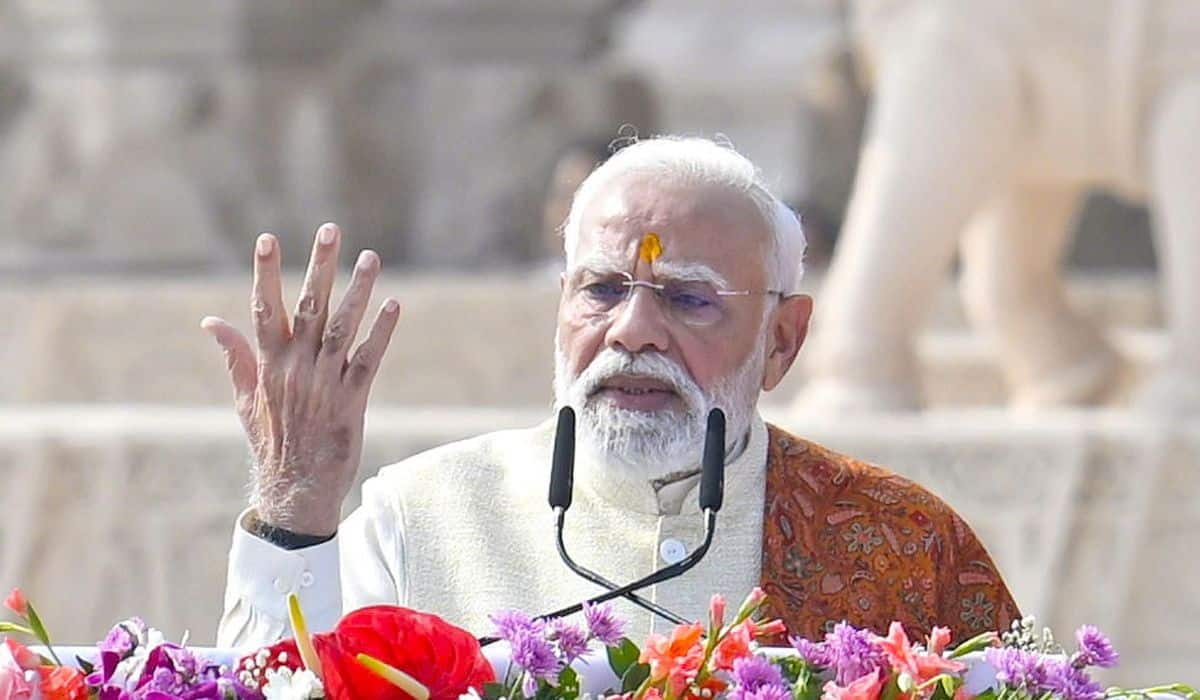During the infamous Emergency period in India (1975-1977), when the then Prime Minister Indira Gandhi imposed a dictatorial regime, Shri Narendra Modi emerged as a critical figure in the resistance movement. Shri Modi's activism during this period, marked by his innovative and fearless approach, significantly contributed to the underground communications network and sustained the fight against the oppressive regime.
The #DarkDaysOfEmergency were very challenging times. In those days, people across all walks of life came together and resisted this attack on democracy. I also had numerous experiences working with various people during that time. This thread gives a glimpse of that... https://t.co/VlVlBz9UyT
— Narendra Modi (@narendramodi) June 25, 2024
The Beginnings of Resistance
Shri Narendra Modi's journey into the heart of the resistance began before the official declaration of the Emergency on June 25, 1975. The student-led agitations against the corruption of the Congress Party were already sweeping the nation, and Gujarat was a significant epicentre of this movement. During the Navnirman Andolan in 1974, Shri Modi, then a Yuva Pracharak of the RSS, was deeply influenced by the power of student voices in driving change. He actively participated in these agitations, leveraging his Akhil Bharatiya Vidyarthi Parishad role to deliver fiery speeches that galvanized the youth.
In his own words, @narendramodi has described the Emergency as an unexpected opportunity (Aapda Mein Avsar) that allowed him to work with leaders and organizations across the political spectrum, exposing him to diverse ideologies and viewpoints.
— Modi Archive (@modiarchive) June 25, 2024
The story of the Emergency,… pic.twitter.com/dQrCiW7Fvn
Role in the Underground Movement
Once the Emergency was imposed, censorship and repression became the norm. Shri Modi and other volunteers organized secret meetings and took on the dangerous task of disseminating underground literature. Collaborating closely with senior RSS leaders like Nath Zagda and Vasant Gajendragadkar, he developed ingenious methods to bypass tight security measures.
One of Shri Modi's remarkable strategies involved using the railway network to spread information. He would load materials related to the Constitution, laws, and the Congress government's excesses onto trains departing from Gujarat, ensuring the messages reached remote areas with minimal risk of detection. This innovative approach was pivotal in maintaining the flow of information across the country.
Once the Emergency was imposed, @narendramodi joined the protests against it. At a time when censorship was at its peak, Modi and other volunteers organized meetings and took on the responsibility of disseminating underground literature. At that time, he worked closely with… pic.twitter.com/4W35prXHAK
— Modi Archive (@modiarchive) June 25, 2024
Leadership and International Outreach
With the RSS forced to go underground, the Gujarat Lok Sangharsh Samiti was established, and Shri Modi, at the young age of 25, quickly rose to the position of General Secretary. His leadership was instrumental in sustaining the revolt against the Congress government, especially during the challenging periods when key movement leaders were imprisoned under the MISA Act.
Shri Narendra Modi also extended his efforts internationally, reaching out to individuals abroad and urging them to publish underground publications to amplify global resistance. He coordinated the collection of articles from the Gujarat Newsletter and Sadhana Patrika, which were then disseminated through platforms like the BBC. Shri Modi ensured that international publications critical of the Emergency, such as 'Satyavani,' were circulated back to India, including inside jails.
Covert Operations and Disguises
Shri Modi frequently adopted various disguises to evade detection. His ability to blend in was so effective that even his acquaintances often failed to recognize him. He dressed as a Swamiji in saffron attire and even as a Sikh with a turban. On one occasion, he successfully deceived jail authorities to deliver an important document, highlighting his resourcefulness and bravery.
Narendra Modi's colleagues abroad sent photocopies of 'Satyavani' and other newspapers published internationally that featured articles opposing the #DarkDaysOfEmergency. He would ensure copies of those materials were prepared and then deliver them to the jails. Additionally,… pic.twitter.com/vz1aSblFCj
— Modi Archive (@modiarchive) June 25, 2024
Post-Emergency Recognition
After the Emergency was lifted in 1977, Shri Modi's activism and leadership during this tumultuous period began to gain recognition. He was invited to Mumbai to discuss the youth's resistance efforts, and his contributions were acknowledged with a modest monetary reward. His relentless efforts during the Emergency led to his appointment as the 'Sambhag Pracharak' of South and Central Gujarat, and he was tasked with preparing official RSS articles documenting the period.
After the Emergency was lifted in 1977, @narendramodi's activism and leadership during that tumultuous period started to gain recognition.
— Modi Archive (@modiarchive) June 25, 2024
In the same year, Modi was invited to Mumbai to participate in a discussion about the youth's resistance efforts during the… pic.twitter.com/P7jZ36YauK
Authoring 'Sangharsh Ma Gujarat'
In 1978, Shri Modi authored his first book, 'Sangharsh Ma Gujarat,' a memoir of his experiences during the Emergency. Remarkably, he completed the book in just 23 days, subsisting solely on lemon water and no solid food. The book, launched by then Chief Minister of Gujarat Babubhai Jasbhai Patel, received widespread acclaim for its objective coverage of the Emergency and was reviewed on national public radio and in prominent newspapers.
In recognition of his fighting spirit and organizational work during the #DarkDaysOfEmergency, Narendra Modi was appointed the 'Sambhag Pracharak' of South and Central Gujarat. He was also entrusted with the important task of preparing the official articles of the RSS during the… pic.twitter.com/skDgGAHdjo
— Modi Archive (@modiarchive) June 25, 2024
'Sangharsh Ma Gujarat' was well received and widely acknowledged for its objective coverage of the #DarkDaysOfEmergency. A review of the book was broadcast on Aakashvani, the national public radio broadcaster of India, from Vadodara and Mumbai.
— Modi Archive (@modiarchive) June 25, 2024
"Several books have been published… pic.twitter.com/EtzEvhFBX2
Several prominent newspapers, including the Gujarati daily Phulchhab and national English papers like the Hindustan Times and the Indian Express, featured reviews and covered the book's launch.
— Modi Archive (@modiarchive) June 25, 2024
[Newspaper cuttings from the launch of the book Sangharsh Ma Gujarat]… pic.twitter.com/CE6rRerfd1
The memoir not only chronicled the events of the Emergency but also served as a testament to the collective resistance. It was praised for its wealth of information and objective approach, earning personal accolades from numerous leaders.
Narendra Modi also received several personal letters reviewing his book and praising his monumental and unique effort. Among those letters was one that stood out as particularly special.
— Modi Archive (@modiarchive) June 25, 2024
Just two days after attending the book's launch, the sitting Chief Minister, Babubhai… pic.twitter.com/zk7RzKihPP
Legacy, Continued Vigilance and Solemn Vow
Fifty years later, as Prime Minister of India, Shri Narendra Modi continues to remind the nation of the dark days of the Emergency. He emphasizes the importance of preserving democracy and vows never to let the recurrence of such authoritarianism again. His legacy as a fearless warrior against the dictatorial regime of Indira Gandhi during the Emergency remains a significant chapter in India's history, inspiring current and future generations to uphold the values of democracy and freedom.
Fifty years later, as the current Prime Minister of India, @narendramodi continues to remind both current and future generations about the 'black spot' cast on India's democracy by the Congress during the #DarkDaysOfEmergency, vowing never to allow it to happen again. pic.twitter.com/CG8BHlOL3x
— Modi Archive (@modiarchive) June 25, 2024













